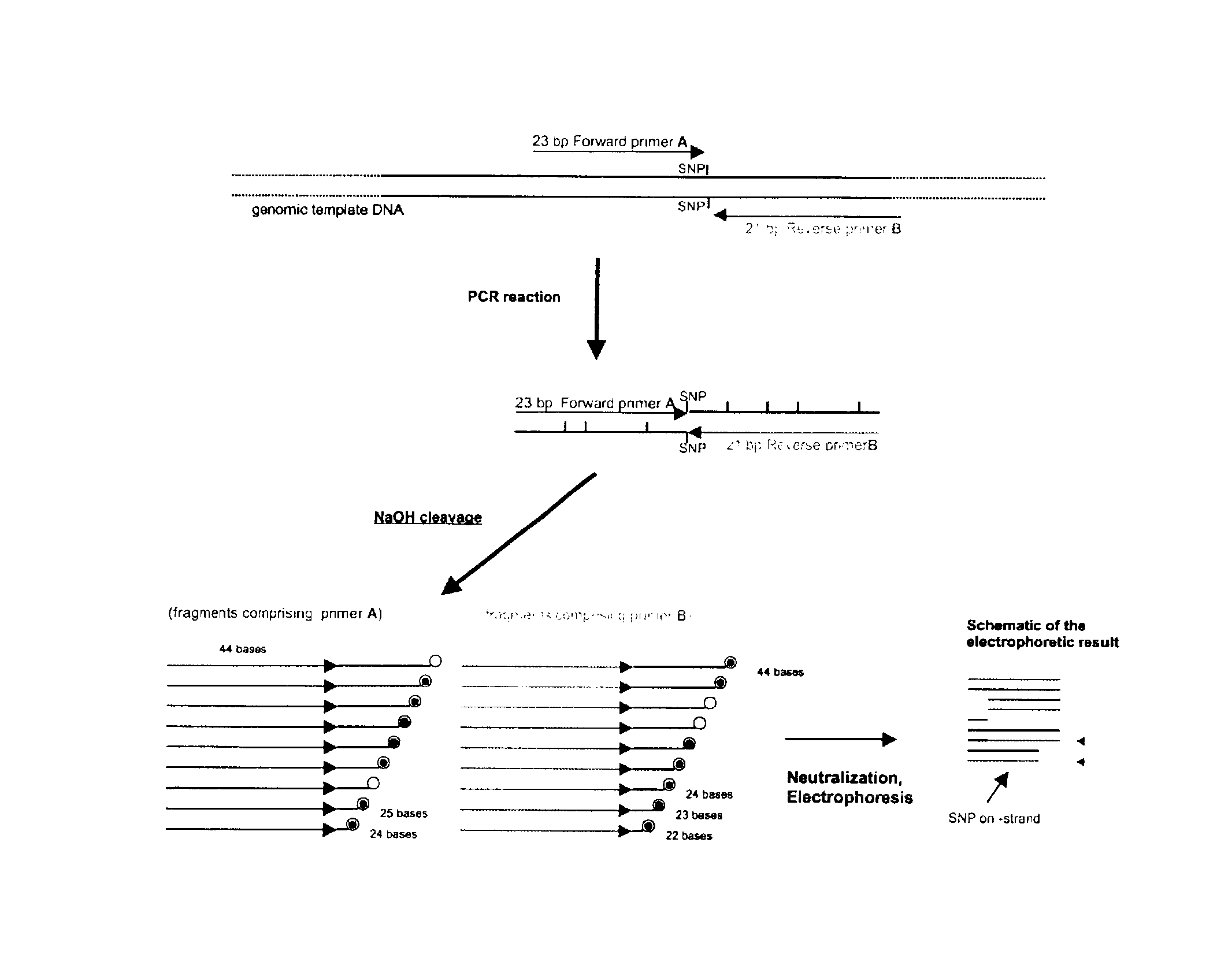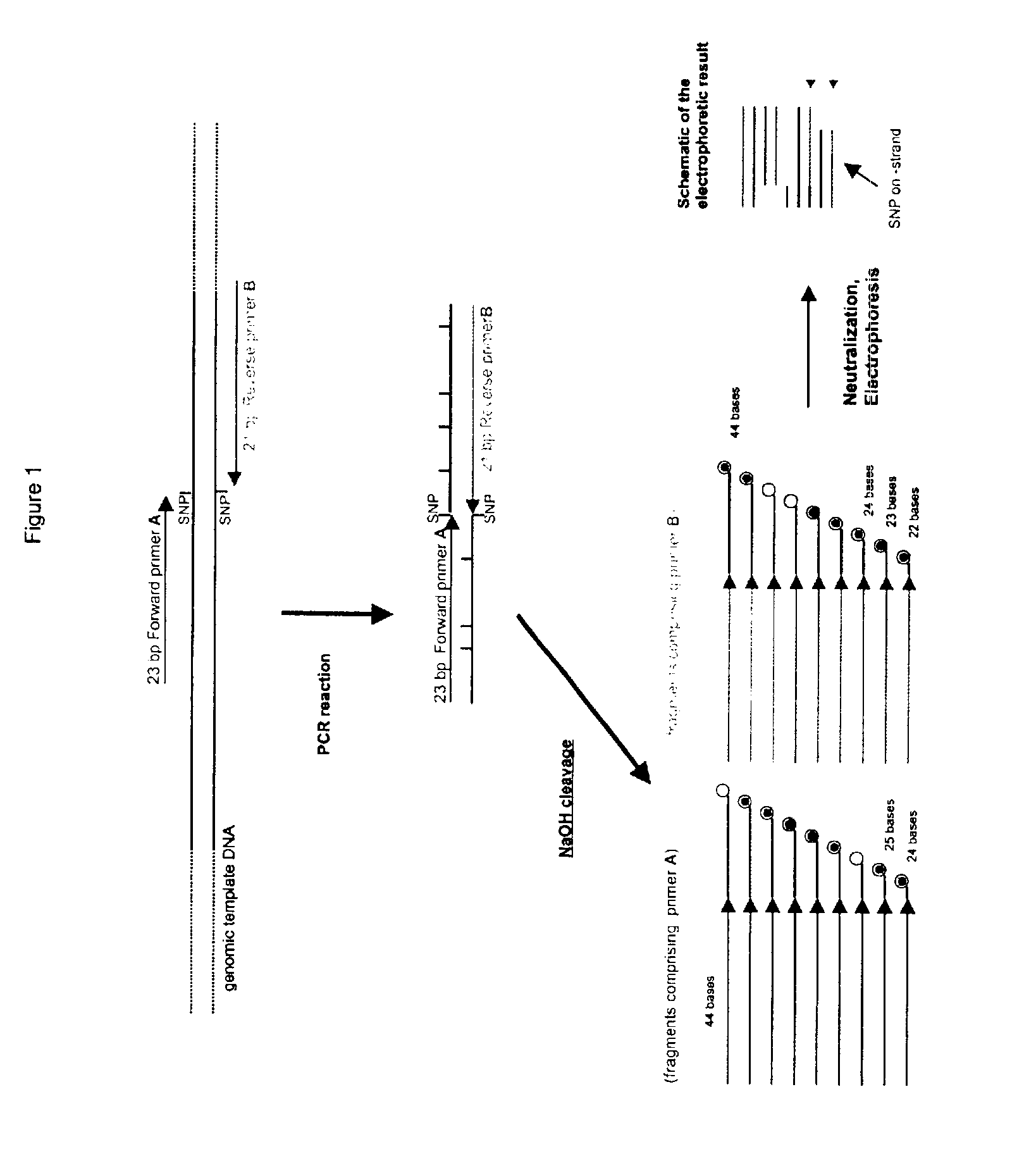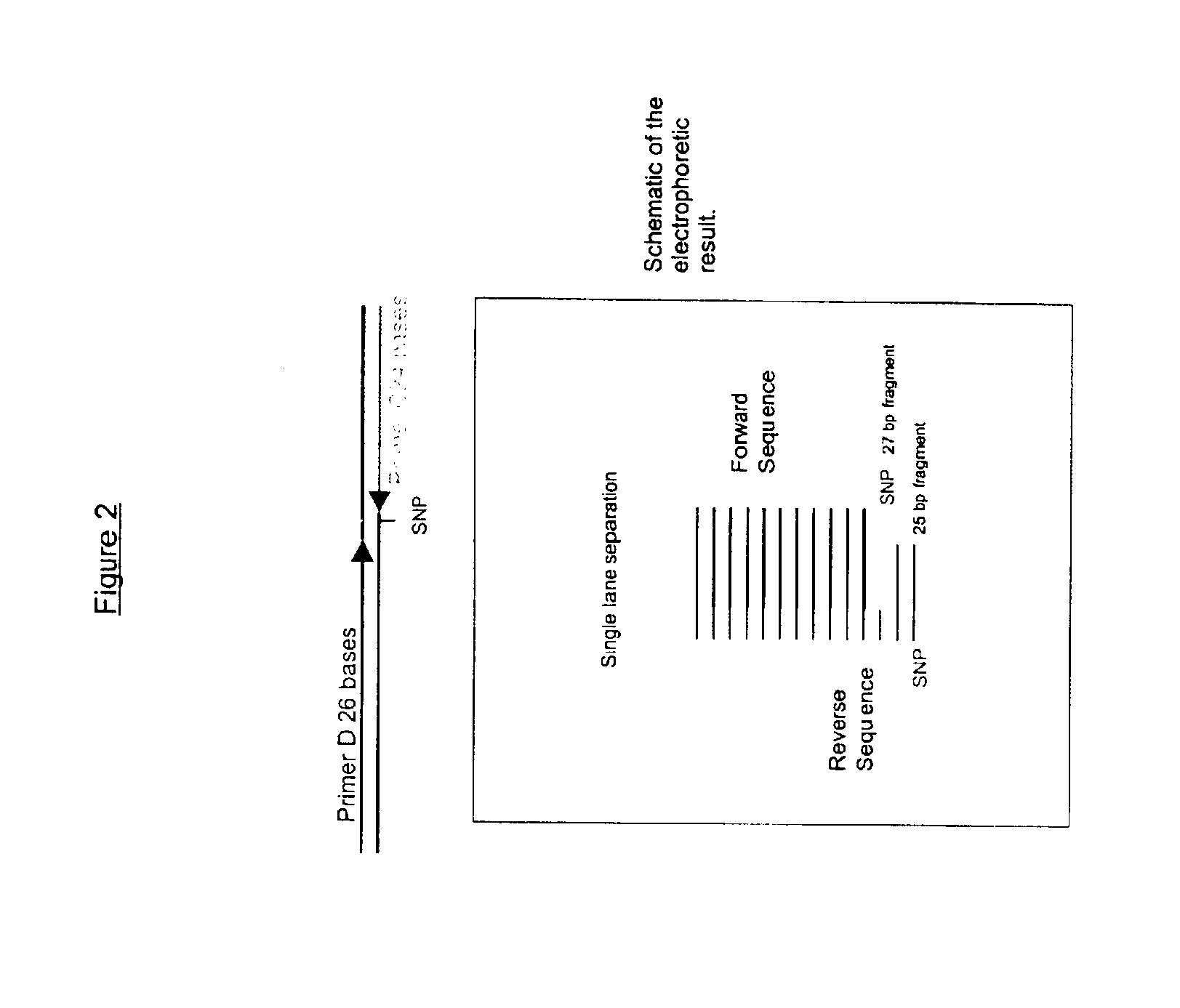Dye-labeled ribonucleotide triphosphates
a technology of ribonucleotide triphosphate and labeling, which is applied in the field of dye-labeled ribonucleotide triphosphate, can solve the problems of high cost of ddntps, frequent occurrence of template quantity, etc., and achieves the effects of increasing the rigidity of the nucleotide analog, reducing the steric interaction, and enhancing incorporation efficiency
- Summary
- Abstract
- Description
- Claims
- Application Information
AI Technical Summary
Benefits of technology
Problems solved by technology
Method used
Image
Examples
example 1
[0188]General Procedures: Sure Seal™ (Aldrich) or Puriss (Fluka) solvents were used for reactions requiring anhydrous conditions. All reactions were carried out under a positive argon or nitrogen atmosphere unless otherwise noted. Reagents were added at room temperature unless otherwise noted. Dyes obtained from manufacturing are activated as N-hydroxysuccinamide (NHS) esters and formulated to 5 mg per 60 μL dimethylsulfoxide (DMSO). Thin layer chromatography (TLC) was performed on silica gel GHLF254 250 μm plates (Analtech).
[0189]Analytical reverse phase (RP) high performance liquid chromatography (HPLC) was performed with a PE series 250 Binary LC pump interfaced with a PE 783A absorbance detector set at a wavelength λ 260 nm. For method A, a Spheri-5 RP-18, 5 μm, 4.6×100 mm column was used with a linear gradient of 0-50% acetonitrile (AcCN) over 20 min, and a flow of 1 mL / min with 0.1 M triethylammonium bicarbonate (TEAB) as buffer unless otherwise noted.
[0190]For purification by...
example 2
[0193]Synthesis of 7-Deaza-7-iodoadenosine.
[0194]Heterocycle preparation exemplified for 6-chloro-7-iodo-pyrrolo[2,3-d]pyrimidine (6-chloro-7-deaza-7-iodopurine). See Seela, F et al., Helv. Chim. Acta, 73: 1602 (1990); Davol, J., J. Chem. Soc., 131 (1960); Wellcome Foundation, B. P. 812,366 (Apr. 22, 1959).
[0195]The synthesis of 6-chloro-7-deaza-7-iodopurine 3.
[0196]Hilbert-Johnson Glycosylation Method.
Reference: Townsend et al., Nucleosides & Nucleotides 18: 153 (1999) and references therein.
[0197]Preparation of 10: N,O-Bis(trimethylsilyl)acetamide (BSA, 1.8 mL. 7.2 mmol) was added to a stirring suspension of 3 (2 g, 7.3 mmol) in dry acetonitrile (AcCN, 50 mL) at room temperature. After stirring for 10 min, 1-O-acetyl-2,3,5-tri-O-benzoyl-β-D-ribofuranose 9 (Aldrich, 3.6 g, 7.2 mmol) was added, followed by the addition of trimethylsilyl trifluoromethanesulfonate (TMSOTf, 2.6 mL, 14.4 mmol) via syringe. After stirring for 10 min, the reaction mixture was placed in an oil bath pre-h...
example 3
[0199]Synthesis of 7-iodoguanosine (16):
[0200]Reference: Ramasamy, et al., J. Heterocyclic Chem. 25: 1893 (1988).
[0201]Preparation of 21: To a stirring solution of ribose sugar 24 [Kaskar et al., Synthesis, 1031 (1990)] (3.0 g, 10 mmol) dissolved in anhydrous THF (30 mL) and carbon tetrachloride(CCl4, 1.2 mL, 12 mmol) cooled to −78° C. was added hexamethylphosphorus triamide (HMPT, 2.2 mL, 12 mmol). The resulting solution was stirred at −78° C. until it had formed a colorless gel and then allowed to warm to room temperature over a period of 1 h. The resulting solution of 22 was added to a stirring solution of 23 (20 mmol) in CH3CN (200 mL) at room temperature, and the reaction mixture was stirred for 17 h. The reaction mixture then was concentrated followed by dilution with water (100 mL). The aqueous solution was extracted with ethyl acetate (2×100 mL). The combined organic portions were washed with water (2×50 mL) and saturated NaCl (2×50 mL), dried over MgSO4, and concentrated t...
PUM
| Property | Measurement | Unit |
|---|---|---|
| flow rate | aaaaa | aaaaa |
| flow rate | aaaaa | aaaaa |
| flow rate | aaaaa | aaaaa |
Abstract
Description
Claims
Application Information
 Login to View More
Login to View More - R&D
- Intellectual Property
- Life Sciences
- Materials
- Tech Scout
- Unparalleled Data Quality
- Higher Quality Content
- 60% Fewer Hallucinations
Browse by: Latest US Patents, China's latest patents, Technical Efficacy Thesaurus, Application Domain, Technology Topic, Popular Technical Reports.
© 2025 PatSnap. All rights reserved.Legal|Privacy policy|Modern Slavery Act Transparency Statement|Sitemap|About US| Contact US: help@patsnap.com



